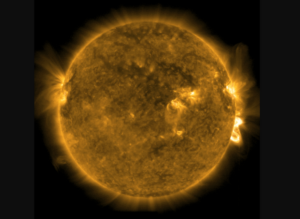University of Illinois taps Blue Canyon for scientific cubesat mission
By Debra Werner

SAN FRANCISCO – The University of Illinois Urbana-Champaign awarded a contract to Blue Canyon Technologies to provide cubesats for a space mission sponsored by the National Science Foundation. The value of the award was not disclosed.
Under the contract announced May 12, Blue Canyon Technologies, a Raytheon Technologies subsidiary, will provide a pair of six-unit cubesat buses plus an engineering development unit for a mission designed to shed light on heating of the sun’s corona.
The mission, called Virtual Super-resolution Optics with Reconfigurable Swarms (VISORS), seeks to study the regions in the sun’s corona where energy is released.
“Blue Canyon Technologies is providing key components in a program that will, for the first time, reveal individual energy-release sites in the solar corona to test theories of coronal heating,” George Stafford, Blue Canyon Technologies co-founder and CEO, said in a statement. “Our company’s technology will enable the VISORS program to help scientists understand the sun’s plasma physics and refine models for nanoflares and corona composition.”
Nanoflares are frequent explosions on the surface of the sun.
If all goes as planned the two VISORS cubesats will travel in 2023 to low Earth orbit. Once there, they will fly 40 meters apart and create a distributed telescope. The lead spacecraft will be equipped with optical elements and the trailing spacecraft will contain the detector.
The University of Illinois is working with NASA Goddard Space Flight Center and a number of universities on the VISORS program including the Georgia Institute of Technology, Stanford University, Washington State University, the Ohio State University, Purdue University, the University of California San Diego, New Mexico State University, Montana State University and the University of Colorado.
Blue Canyon Technologies is scheduled to deliver cubesats to Georgia Tech for instrument integration in 2022.
May 12, 2021 at 05:30PM
via SpaceNews read more...

Post a Comment